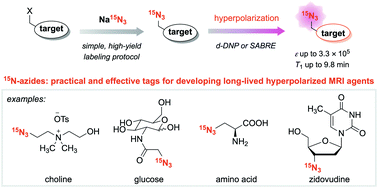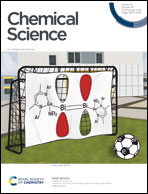15N-Azides as practical and effective tags for developing long-lived hyperpolarized agents†
Abstract
Azide moieties, unique linear species containing three nitrogen atoms, represent an attractive class of molecular tag for hyperpolarized magnetic resonance imaging (HP-MRI). Here we demonstrate (15N)3-azide-containing molecules exhibit long-lasting hyperpolarization lifetimes up to 9.8 min at 1 T with remarkably high polarization levels up to 11.6% in water, thus establishing (15N)3-azide as a powerful spin storage for hyperpolarization. A single (15N)-labeled azide has also been examined as an effective alternative tag with long-lived hyperpolarization. A variety of biologically important molecules are studied in this work, including choline, glucose, amino acid, and drug derivatives, demonstrating great potential of 15N-labeled azides as universal hyperpolarized tags for nuclear magnetic resonance imaging applications.



 Please wait while we load your content...
Please wait while we load your content...